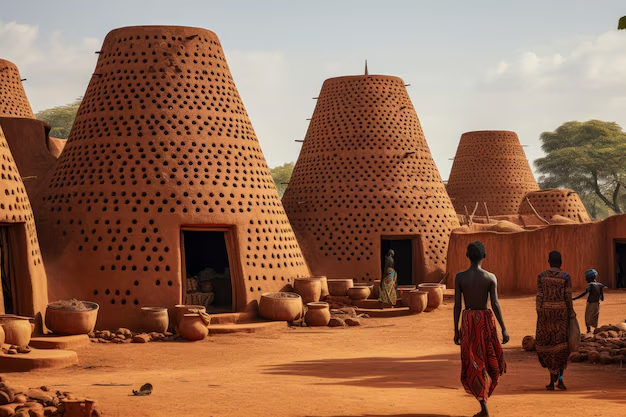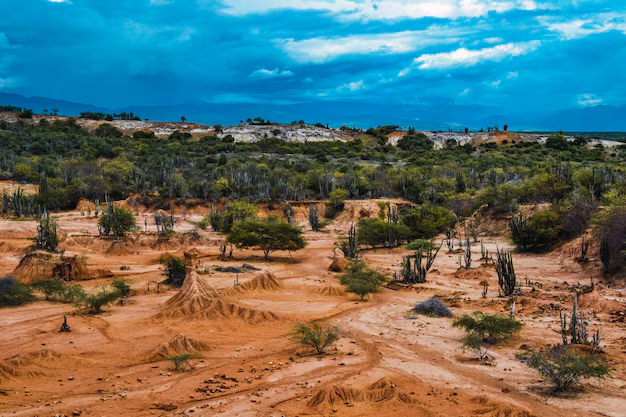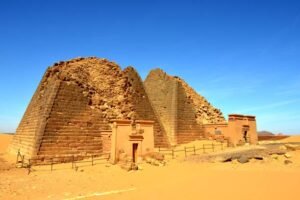African Heritage: Historic Landmarks You Must See
Africa, a continent rich in history and culture, is home to some of the world’s most remarkable landmarks. From ancient cities to colonial architecture, these sites reflect the diverse heritage of the African people. As travelers seek to understand the continent’s past, visiting these historic landmarks offers a glimpse into the intricate tapestry of African history. In this blog post, we will explore must-see historic landmarks across Africa, highlighting their significance and the stories they tell.
The Pyramids of Giza, Egypt
Overview
No discussion of African heritage is complete without mentioning the Pyramids of Giza. Located on the outskirts of Cairo, these iconic structures are among the most recognizable monuments in the world. Built as tombs for pharaohs during the Fourth Dynasty, the Great Pyramid of Giza remains one of the Seven Wonders of the Ancient World.
Significance
The Pyramids are a testament to ancient Egyptian engineering and architectural prowess. They reflect the civilization’s beliefs in the afterlife and the importance of preserving the bodies of the deceased. Visiting the pyramids allows travelers to appreciate the grandeur of ancient Egypt and the cultural achievements of its people.
Tips for Visiting
- Best Time to Visit: Early morning or late afternoon to avoid the heat and crowds.
- Guided Tours: Consider a guided tour to learn about the history and significance of each pyramid.
Robben Island, South Africa
Overview
Robben Island, located off the coast of Cape Town, is a UNESCO World Heritage Site that holds deep significance in South Africa’s struggle against apartheid. It served as a prison for political prisoners, including Nelson Mandela, who spent 18 years of his life incarcerated there.
Significance
The island symbolizes the resilience of the human spirit in the face of oppression. Today, it serves as a powerful reminder of the importance of freedom and justice. Guided tours led by former inmates provide a firsthand account of life on the island and the broader context of South Africa’s history.
Tips for Visiting
- Booking: Reserve tickets in advance, as tours can fill up quickly.
- Bring Warm Clothing: The weather can be unpredictable, so be prepared for wind and rain.
The Great Mosque of Djenné, Mali
Overview
The Great Mosque of Djenné is one of the most famous architectural masterpieces in Africa. Constructed in the 13th century, this mosque is made entirely of sun-baked mud bricks and is considered the largest mud brick building in the world.
Significance
This mosque is a prime example of Sudano-Sahelian architecture and reflects the region’s cultural and religious heritage. Djenné is also known for its vibrant market and rich history as a center of learning and trade. The mosque is a UNESCO World Heritage Site and serves as a place of worship and community gathering.
Tips for Visiting
- Visit During Market Day: Experience the local culture by visiting during the weekly market, held on Mondays.
- Respect Local Customs: Dress modestly and be mindful of cultural practices when visiting the mosque.
Stone Town, Zanzibar, Tanzania
Overview
Stone Town, the historical heart of Zanzibar City, is a UNESCO World Heritage Site characterized by its narrow alleys, bustling bazaars, and intricate wooden doors. The town reflects a mix of African, Arab, Persian, Indian, and European influences, resulting from centuries of trade and cultural exchange.
Significance
Stone Town is steeped in history, with landmarks such as the Old Fort, the House of Wonders, and the Sultan’s Palace. It is a living museum that showcases the rich heritage of the Swahili coast and the impact of the spice trade.
Tips for Visiting
- Explore on Foot: The best way to experience Stone Town is by wandering its narrow streets and discovering hidden gems.
- Sample Local Cuisine: Don’t miss trying Zanzibari dishes like biryani and fresh seafood from local markets.
The Aksum Obelisks, Ethiopia
Overview
The Aksum Obelisks are a group of ancient granite monuments located in the northern region of Ethiopia. These towering structures, some reaching over 24 meters in height, date back to the 4th century AD and are believed to mark the graves of Aksumite kings.
Significance
The obelisks symbolize the glory of the Aksumite Empire, one of the great civilizations of ancient Africa. Aksum was a significant trade hub and a center of early Christianity, which still influences Ethiopia today.
Tips for Visiting
- Visit the Archaeological Site: Explore the ruins of Aksum, including ancient churches and royal tombs.
- Respect the Site: Be mindful of local customs and regulations when exploring the area.
Victoria & Alfred Waterfront, South Africa
Overview
The Victoria & Alfred Waterfront in Cape Town is a vibrant area that combines history, culture, and entertainment. It was originally built in the 19th century as a harbor for the British fleet and has since transformed into a popular tourist destination.
Significance
The waterfront is not only a commercial hub but also home to historical sites such as the Two Oceans Aquarium, the Zeitz Museum of Contemporary Art Africa, and the Nelson Mandela Gateway. It serves as a testament to Cape Town’s maritime history and its role in trade.
Tips for Visiting
- Explore the Markets: Check out local crafts and food stalls for unique souvenirs.
- Take a Ferry to Robben Island: The ferry departs from the waterfront, making it a convenient starting point for your visit to the historic prison.
The Ancient City of Timbuktu, Mali
Overview
Timbuktu, once a thriving center of trade and scholarship, is a UNESCO World Heritage Site. Founded in the 5th century, it became an important hub for the trans-Saharan trade and a center of Islamic learning in the 15th and 16th centuries.
Significance
Timbuktu is home to ancient mosques and libraries that house priceless manuscripts, reflecting the city’s rich intellectual heritage. It symbolizes the height of African civilization during the medieval period and continues to inspire scholars and travelers alike.
Tips for Visiting
- Visit the Manuscript Libraries: Gain insight into the city’s scholarly past by visiting local libraries that house ancient texts.
- Respect Local Traditions: Be mindful of cultural practices and dress appropriately when visiting religious sites.
The Temples of Karnak, Egypt
Overview
The Karnak Temple Complex, located near Luxor, is one of the largest religious complexes in the world. Dedicated to the Theban triad of Amun, Mut, and Khonsu, it was built over 2,000 years and showcases impressive architecture and intricate carvings.
Significance
Karnak is a testament to the artistic and architectural achievements of ancient Egypt. Its towering columns, grand halls, and sacred lakes provide insight into the religious practices and beliefs of the ancient Egyptians.
Tips for Visiting
- Take a Guided Tour: A knowledgeable guide can provide context and depth to your visit, explaining the significance of various structures.
- Plan for Sunset: Visiting during sunset offers stunning views as the temple complex is bathed in golden light.
The Castle of Good Hope, South Africa
Overview
The Castle of Good Hope, located in Cape Town, is the oldest surviving colonial building in South Africa. Built in the 17th century by the Dutch East India Company, the castle served as a fort and a place of government.
Significance
The Castle represents the colonial history of South Africa and the impact of European powers on the continent. Today, it houses a military museum and offers insight into the region’s complex past.
Tips for Visiting
- Join a Guided Tour: Learn about the castle’s history, architecture, and the role it played during colonial times.
- Check for Events: The castle often hosts cultural events and performances, providing a unique experience.
Conclusion: Embracing Africa’s Rich Heritage
Exploring Africa’s historic landmarks is a journey through time, revealing the continent’s rich cultural tapestry and diverse heritage. From the ancient pyramids of Egypt to the vibrant streets of Stone Town, each site tells a story that connects the past to the present.
As you travel through Africa, take the time to appreciate these landmarks, understanding their significance and the cultures that shaped them. By doing so, you not only enrich your own travel experience but also honor the heritage of the African people. Whether you’re seeking adventure, history, or cultural immersion, Africa’s historic landmarks offer an unforgettable journey that resonates long after you return home.














Publicar comentário